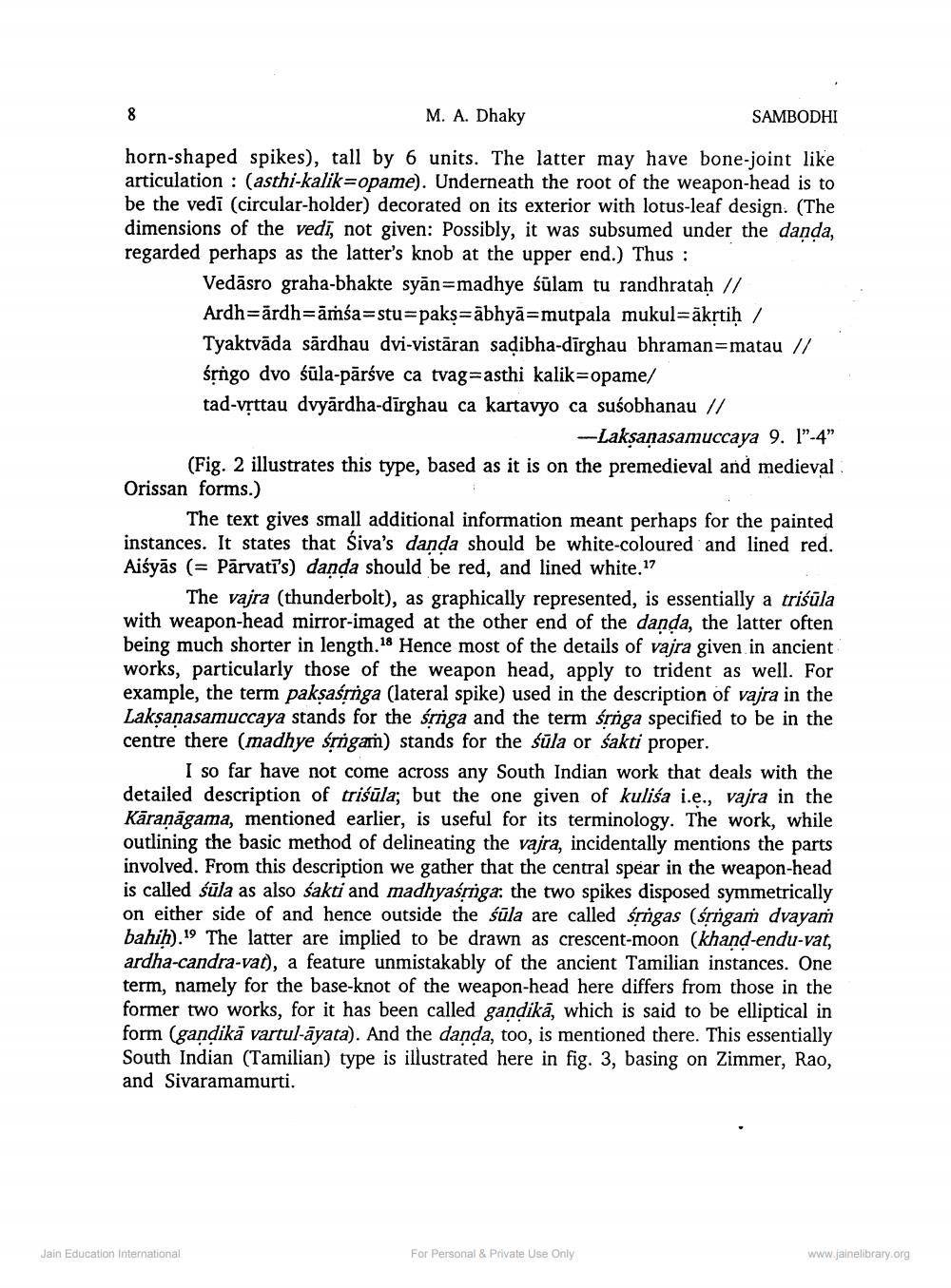________________
M. A. Dhaky
SAMBODHI
horn-shaped spikes), tall by 6 units. The latter may have bone-joint like articulation : (asthi-kalik=opame). Underneath the root of the weapon-head is to be the vedi (circular-holder) decorated on its exterior with lotus-leaf design. (The dimensions of the vedi, not given: Possibly, it was subsumed under the danda, regarded perhaps as the latter's knob at the upper end.) Thus :
Vedāsro graha-bhakte syān=madhye śūlam tu randhratah // Ardh=ārdh=āṁśa=stu=pakş=ābhyā=mutpala mukul=ākstiḥ / Tyaktvāda sārdhau dvi-vistāran sadibha-dirghau bhraman=matau // śrngo dvo śūla-pārśve ca tvag=asthi kalik=opame/ tad-vrttau dvyārdha-dīrghau ca kartavyo ca suśobhanau //
- Laksanasamuccaya 9. 1”-4” (Fig. 2 illustrates this type, based as it is on the premedieval and medieval Orissan forms.)
The text gives small additional information meant perhaps for the painted instances. It states that Siva's danda should be white-coloured and lined red. Aiśyās (= Pārvatī's) danda should be red, and lined white.17
The vajra (thunderbolt), as graphically represented, is essentially a triśūla with weapon-head mirror-imaged at the other end of the danda, the latter often being much shorter in length.18 Hence most of the details of vajra given in ancient works, particularly those of the weapon head, apply to trident as well. For example, the term paksaśrriga (lateral spike) used in the description of vajra in the Laksanasamuccaya stands for the riga and the term śrga specified to be in the centre there (madhye srigam) stands for the śūla or śakti proper.
I so far have not come across any South Indian work that deals with the detailed description of triśūla; but the one given of kulića i.e., vajra in the Kāraṇāgama, mentioned earlier, is useful for its terminology. The work, while outlining the basic method of delineating the vajra, incidentally mentions the parts involved. From this description we gather that the central spear in the weapon-head is called śūla as also sakti and madhyaśmiga. the two spikes disposed symmetrically on either side of and hence outside the süla are called śrngas (śrngaṁ dvayam bahih).19 The latter are implied to be drawn as crescent-moon (khand-endu-vat, ardha-candra-var), a feature unmistakably of the ancient Tamilian instances. One term, namely for the base-knot of the weapon-head here differs from those in the former two works, for it has been called gandikā, which is said to be elliptical in form (gandikā vartul-āyata). And the danda, too, is mentioned there. This essentially South Indian (Tamilian) type is illustrated here in fig. 3, basing on Zimmer, Rao, and Sivaramamurti.
Jain Education International
For Personal & Private Use Only
www.jainelibrary.org




